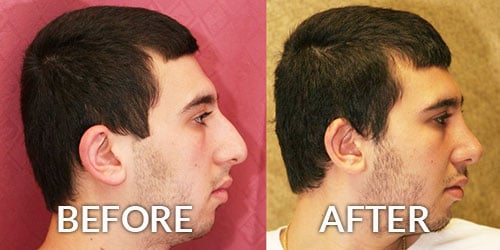Ethnic Rhinoplasty
Consultations offered at our three convenient locations in Encino, Glendale and Bakersfield
Ethnic Rhinoplasty in Los Angeles is a very specialized area of Nose Surgery or Facial Plastic Surgery which requires special knowledge, understanding and experience. The challenge of Ethnic Nose Surgery in Beverly Hills is to achieve a nose that is natural looking.
In order to achieve a natural looking nose during an Ethnic Rhinoplasty a plastic surgeon has to be aware of several fundamental differences between an African American, Asian, Hispanic, Middle Eastern and Caucasian nose. An Asian or a black person’s nose is typically wider at the nostrils, more flared, and has less nasal tip projection. Asians and African Americans typically do not have a prominent bridge. In order to make this ethnic nose more proportional and balanced, augmentation of the nasal bridge is usually required. Nasal augmentation is achieved either with the use of a nasal implant or that of a cartilage graft. The size and width of the nostrils is also reduced to a more normal proportion, and the nasal tip is raised.
There are several limitations in performing a rhinoplasty in Asians and African-Americans. Because the nasal skin of these ethnicities is relatively thicker than that of a Caucasian the same level of refinement and definition can seldom be achieved in an Asian nose surgery. Therefore, the nasal tip often remains rounder and less sharp, and the nostrils (ala) skin usually stays thicker.
Unlike Asians and African-Americans, Hispanics have nasal characteristics that mimic more that of the Caucasians. Never the less, among Hispanics there is still a wide variation of nasal characteristics which go along the origin of the South American person- European Spanish, American-Indian, or Mayan.
Similarly, Asians carry many different facial and nasal features which are unique to their ethnicity- Korean, Chinese, Malaysian, Pilipino, Vietnamese, etc.
A skilled cosmetic plastic surgeon who specializes in rhinoplasty has to be able to distinguish these ethnic features and be able to apply the necessary surgical techniques to deliver a nose that is proportional to the rest of the face, while maintaining ethnic features.
Because of the tendency for developing keloid scarring the incisions in an Asian or African nasal surgery have to be carefully and strategically placed, for example in the nostril creases. Likewise, an open Rhinoplasty should be avoided.




